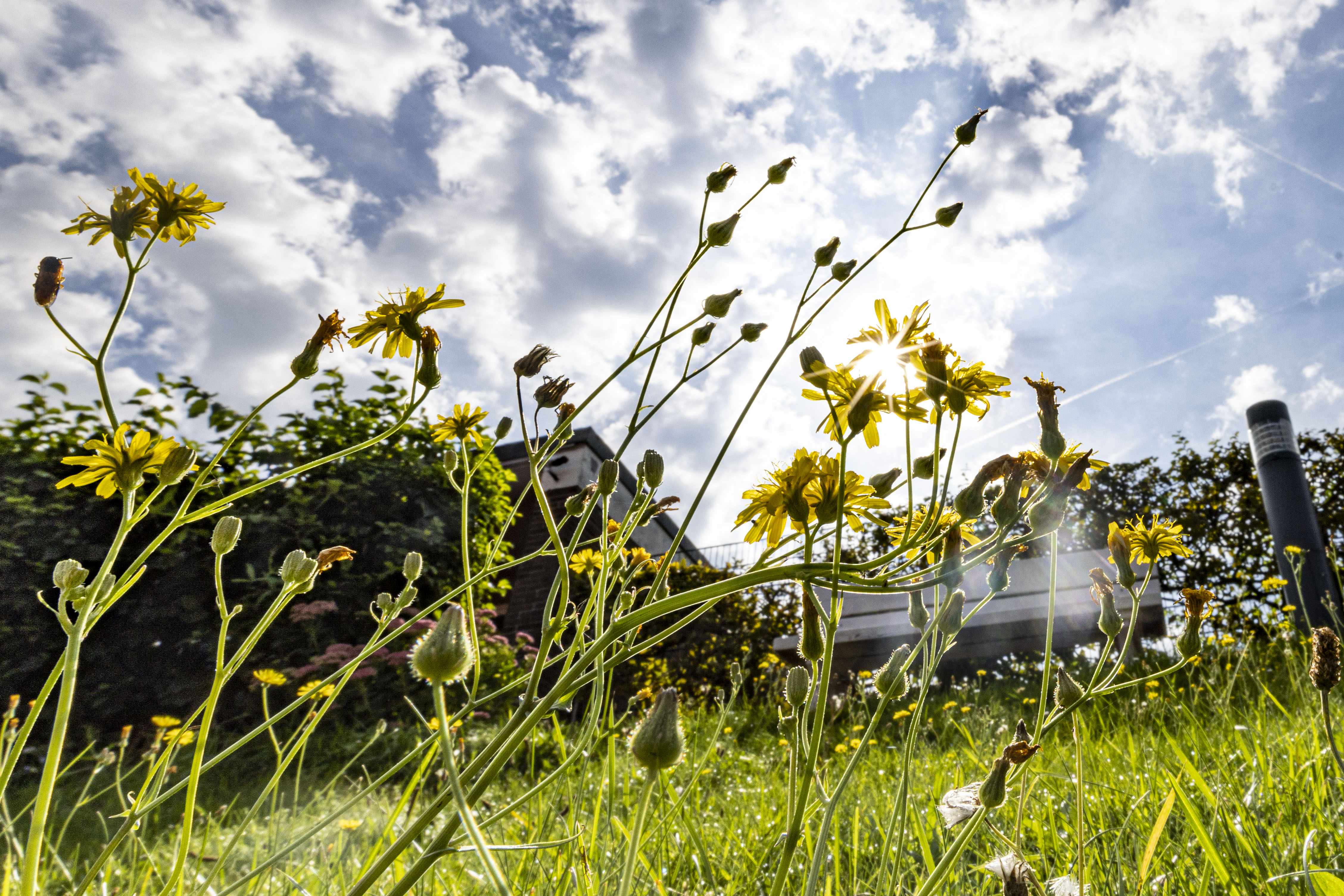Allergy season is getting longer and more intense because of climate change and that’s bad news for children growing up in a warming world.
About one in five children in the United States already has seasonal allergies, and 6.5% have asthma, most commonly triggered by pollen. If carbon pollution continues, asthma-driven emergency room visits are expected to rise.
"We have to understand that this problem is going to get worse unless we get off of fossil fuels," said Dr. Lisa Patel, clinical associate professor of pediatrics at Stanford Children's Health in the San Francisco Bay Area.
Children typically spend more time outdoors than adults, so are more likely to be exposed to potential allergens, and their airways are also smaller, she said.
Get South Florida local news, weather forecasts and entertainment stories to your inbox. Sign up for NBC South Florida newsletters.
"So mechanically, just a little bit of irritation in a smaller airway can produce big problems," she said.
The nonprofit organization Climate Central examined temperature trends in 197 U.S. cities to determine how the pollen season had changed from 1970 through 2023. Its findings, released Wednesday, show what's happening in a warming world:
- In 164 of those cities, the freeze-free season lengthened by 19 days on average.
- The city where the freeze-free growing increased the most? Reno, Nevada.
- In 60 cities, the time between the last freeze and the first freeze was at least three weeks longer.
- All of the country’s climate regions — nine in total — saw an increase of at least 11 days on average in their freeze-free growing seasons. The greatest increase occurred in the Northwest, by 26 days. The Northeast and Southeast saw 15 more days for each. The Upper Midwest had an increase of 14 days.
Pollen is traditionally produced from spring until early fall -- trees and grasses in the spring and summer, and ragweed in the late summer and early fall. But the season is getting longer thanks to the burning of fossil fuels — oil, natural gas and coal — which releases carbon dioxide and other emissions and traps heat in the atmosphere. An earlier and warmer spring brings a longer growing season and more time to release pollen, Climate Central notes.
"What climate change is doing is driving longer pollen seasons and more intense pollen seasons and so you might notice that your child is having symptoms at a time of year that isn’t usual for them and that’s because our external climate is different than it used to be," said Patel, who is also the executive director of the Medical Society Consortium on Climate and Health.
Higher levels of carbon dioxide also increases the the production of pollen, especially in grasses and ragweed. The United States could see a 200% increase in pollen production by the end of the century, according to a 2022 study published in Nature.
"When there’s more carbon dioxide, plants produce more pollen and the more pollen there is, the more exposure there is," Patel said.
And not only is the season getting longer, the pollen is becoming more potent, said Theresa MacPhail, author of "Allergic: Our Irritated Bodies in a Changing World." The protein in pollen is increasing in strength, meaning our immune systems are more likely to respond, she said.
“So you’re not just changing quantifies or getting extended seasons of pollen, you’re actually getting qualitative different pollen,” she said.
For children also exposed to air pollution, there's a one-two punch, said MacPhail, an associate professor of science and technology studies at Stevens Institute of Technology in Hoboken, New Jersey. Pollen can attach to the fine particulates — diesel exhaust is an egregious culprit — and be delivered deeper in the lungs that they would otherwise would be, she said.
“So it’s almost like they’re hailing a taxi cab and going a little bit further into your lungs, which is causing more irritation,” MacPhail said.
Children breathe more frequently than adults — infants can breathe about twice as often — so for them it is a bigger problem, she said.
Reducing young children's exposure to some airborne substances, dust mites or tobacco smoke, might delay or prevent allergy or asthma symptoms, according to the American Academy of Allergy, Asthma and Immunology. But exposure to pets or farm animals may be benefit your child. Children who grow up on a dairy farm are protected from allergy, hay fever, and asthma, studies have shown.
Asthma-related emergency room visits could soar
For children, seasonal allergies and asthma can disrupt school, alter their moods and interrupt their sleep. They will be wheezing and sneezing, with stuffy noses and coughing.
“The symptoms tend to get worse at night, as they do with all of us, so you are not imaging that your allergies get worse at night, they do,” MacPhail said. “And it’s similar for children. So they’ll just simply have trouble sleeping because they’re having trouble breathing.”
An increase in temperature of 3.6 Fahrenheit could drive a 17% increase in asthma-related emergency room visits each year, the Environmental Protection Agency found. Oak pollen disproportionately affects Hispanic, Asian and Black children, the EPA says. Black and Puerto Rican children are two to three times more likely to have asthma than white children, according to the Asthma and Allergy Foundation of America.
Advice for parents of children with allergies or asthma
Many of the patients Patel treats as an emergency room doctor are children with asthma, who may be having symptoms earlier or later than expected.
She tells their parents, "Be mindful that what the burning of fossil fuels is doing in terms of climate change is just throwing predictability out the window."
What else can parents do?
- When pollen counts are high, consider keeping children with allergies or asthma indoors.
- Try to keep pollen out of children’s bedrooms by keeping the windows and doors closed.
- Invest in a portable air cleaner or consider making one yourself with a box fan and a MERV 13 air filter. The EPA provides information about research on DYI air cleaners on its website. The American Thoracic Society in 2018 noted: "A study evaluating air filtration in homes of children with asthma found that using central forced air system air filters to remove particles may be generally less effective than using portable air cleaners, which removed about 50% of fine particles."
- Encourage children to take a bath or shower before bed to get the pollen off.
- Make sure your home is free of other possible triggers, including tobacco smoke and gas stoves, Patel said. The federal Inflation Reduction Act offers rebates to replace gas stoves
"We have a lot of work to do for people to understand that climate change isn’t just something for the polar bears,” she said. “Climate change will actually be the greatest driver of a child’s health born today.”



